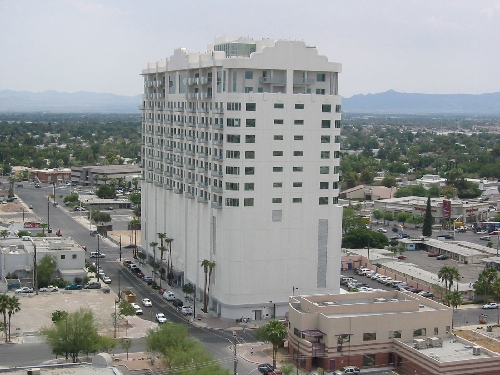Homebuyers flocking to downtown high-rise developments

Despite the economic ups and downs of the past few years, Sam Cherry, the pioneering downtown developer who opened the first residential high-rise within Las Vegas city limits, remains as committed as ever to the area. Today, he and other downtown, high-rise condominium owners are ecstatic to see the area not only recovering, but thriving.
“While downtown redevelopment has been a passion of many people for years, the events of the past year have put the area on the fast track,” Cherry said. “With the opening of major civic projects, urban lounges and restaurants and the planned relocation of Zappos, living downtown has become more attractive than ever. And the proof is in the numbers.”
Cherry’s Soho Lofts, located on Hoover Avenue in the northeast corner of the 18b Las Vegas Arts Distict, is now at 90 percent occupancy. Its nearby sister property, Newport Lofts, boasts occupancy of more than 85 percent.
At The Odgen, located on the corner of Las Vegas Boulevard and Ogden Avenue in the Fremont East Entertainment District, occupancy is nearing 90 percent. According to John Tippins, regional managing director of ST Residential which owns The Ogden, there were only eight people living at The Ogden a year ago. Today, there are 350 residents.
“What a difference a year makes,” he said.
L’Occtaine, a midsized residential building across the street from Soho Lofts, is filled to capacity with a tightly knit community of residents.
“Now we are working to open more businesses down here, to build up this section of downtown and the Arts District,” said Cherry, who lives full time in Soho Lofts. So far, a small grocery store and urban lounge have opened on the building’s first floor. A vegan restaurant is in the works.
In cities that experienced gradual development of downtowns, many of these types of businesses would already be in place and sustained by the existing population prior to developers embarking on high-rise building projects, Cherry said.
“Las Vegas was unique due to the extreme and rapid increase in land and housing values,” he added.
“During the boom, Las Vegas glazed right over that middle growth period,” says Cherry. “Typically you would see an area like this have a handful of midsize residential properties before a project like Soho Lofts was introduced. Downtown Las Vegas went from nothing to high-rises, because by the time we were buying the land and building, there was simply no way financially for us to make a smaller project work.”
Though the growth turned out to be unsustainable, Cherry says the recession was — in some ways — positive for downtown living. After many of the condos went through foreclosure and re-emerged at lower price points, urban high-rise living became a possibility for younger downtown enthusiasts who had previously been unable to afford it.